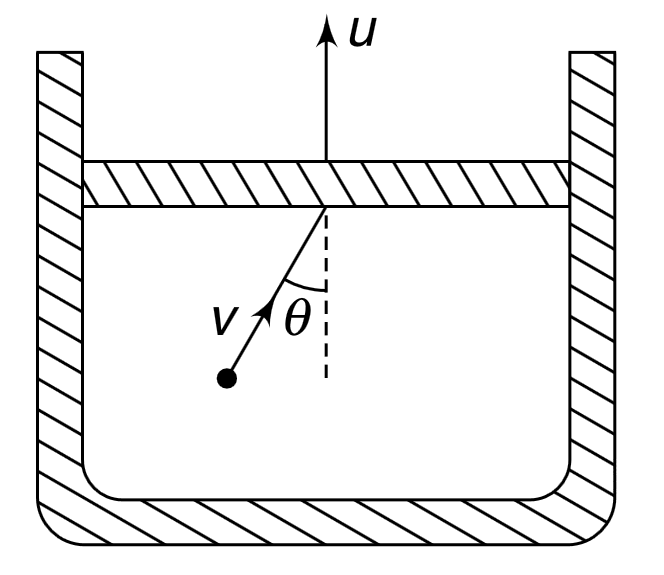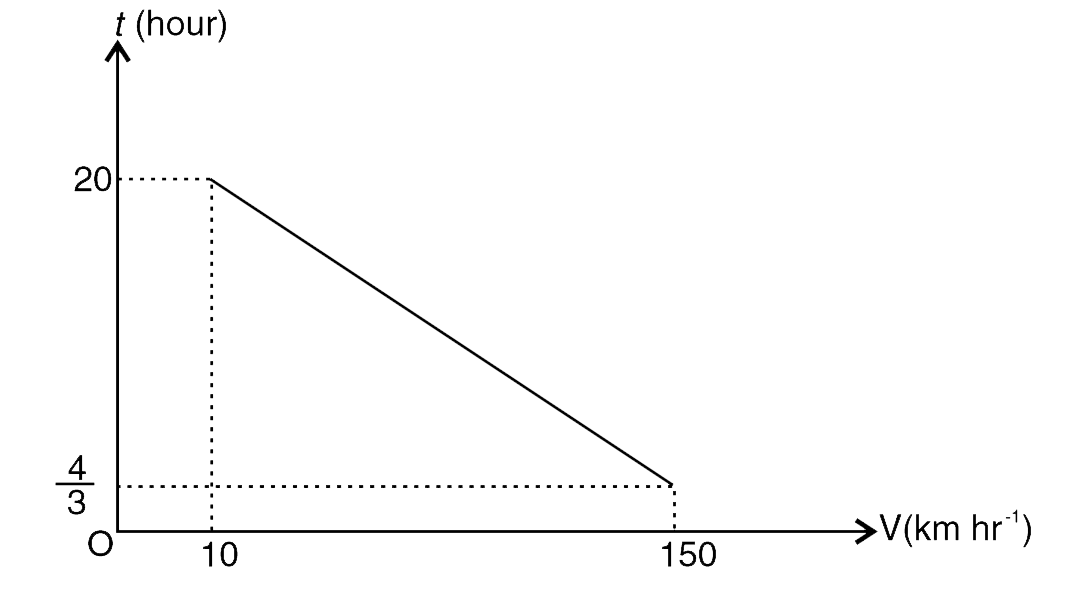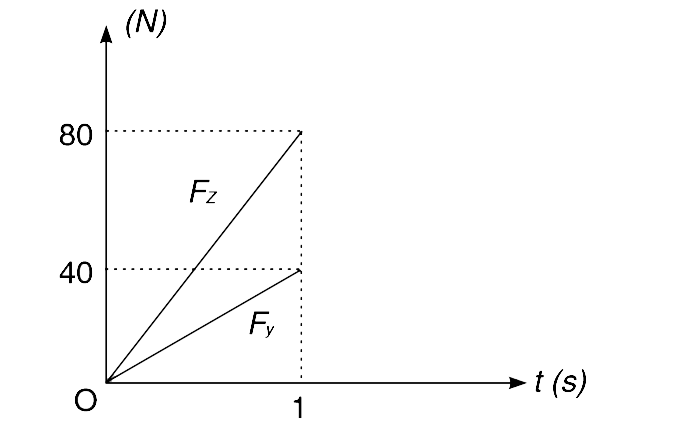A close container of volume contains a mixture of neon and another gas A of unknown molecular mass. The container contains 4 g of Neon and 24 g of gas A. At a temperature of the pressure of the mixture is . Is there any possibility of finding gas A in the atmosphere of a planet of radius 600 km and mean density ?
Temperature of the planet is .
Molar molecular mass of neon = 20 g,
Gas constant
Gravitational constant
The correct Answer is:No
Step by step video, text & image solution for A close container of volume 0.02 m^(3) contains a mixture of neon and another gas A of unknown molecular mass. The container contains 4 g of Neon and 24 g of gas A. At a temperature of 27^(@)C the pressure of the mixture is 105 N//m^(2). Is there any possibility of finding gas A in the atmosphere of a planet of radius 600 km and mean density r = 5 x× 103 kg//m^(3) ? Temperature of the planet is 2200^(@)C. Molar molecular mass of neon = 20 g, Gas constant R = 8.314 "J mol"^(–1) K^(–1) Gravitational constant G = 6.67 x× 10^(–11) N m^(2) kg^(–2) by Physics experts to help you in doubts & scoring excellent marks in Class 11 exams.
Updated on:21/07/2023Topper's Solved these Questions
- KINETIC THEORY OF GASESBook:ARIHANTChapter:KINETIC THEORY OF GASESExercise:Level 2
Explore 18 Videos
- KINETIC THEORY OF GASESBook:ARIHANTChapter:KINETIC THEORY OF GASESExercise:Level 3
Explore 4 Videos
- KINEMATICSBook:ARIHANTChapter:KINEMATICSExercise:Level 3
Explore 33 Videos
- MOMENTUM AND CENTRE OF MASSBook:ARIHANTChapter:MOMENTUM AND CENTRE OF MASSExercise:Momentum And Center of Mass
Explore 117 Videos
Similar Questions
The rms speed of molecules of an ideal gas is vrms. Obtain the expression for rms value of relative speed for all pair of molecules in a gas sample.
View SolutionAn ideal gas is inside a cylinder with a piston that can move freely. The walls of the cylinder and piston are non- conducting. The piston is being moved out of the cyl- inder at a constant speed u.
(a) Consider a gas molecule of mass m moving with speed v(>>u). It hits the piston elastically at an angle of incidence q. Calculate the loss in kinetic energy of the molecule.
(b) If the area of piston is A and pressure of the gas is P, calculate the rate of decreases of molecular kinetic energy of the gas sample.
(c) Ifu>> molecular velocities, at what rate will the gas lose its molecular kinetic energy

View SolutionA car manufacturer usually tells a optimum speed (V0) at which the car should be driven to get maximum mileage. In order to find the optimum speed for a new model, an engineer of the car company experimented a lot and finally plotted a graph between the extreme time t (defined as number of hours a tank full of petrol lasts) vs the constant speed V at which car was run.

(a) Calculate the optimum speed V0 for this new model.
(b) If the fuel tank capacity of this car is 50 litre, what maximum mileage can be obtained from this car?
View SolutionA particle is acted upon by a force for 1 second whose X component remains constant at Fx=30N but y and z components vary with time as shown in the graph. Calculate the magnitude of change in momentum of the particle in 1 s. What angle does the change in momentum (Δ→P) make with X axis ?

View SolutionA diver uses noen- oxygen mixture containing 7.4 g oxygen and 167.5 g neon for respiretion under water. If the pressure partial pressures of oxygen and neon in the mixture? Atomic mass of oxygen is u and that of neon is 20.2 u.
View SolutionA neon-dioxygen mixture contains 70.6 g dioxygen and 167.5 g neon. If pressure of the mixture of gases in the cylinder is 25 bar. What is the partial pressure of dioxygen and neon in the mixture ?
View SolutionA container of volume V, contains 0⋅28 g of N2 gas. If same volume of an unknown gas under similar conditions of temperature and pressure weighs 0⋅44 g, the molecular mass of the gas is
View SolutionA neon dioxide mixture contains 70.6 g dioxygen and 167.5 g neon. If pressure of the mixture of gases in the cylinder is 25 bar. What is the partial pressure of dioxygen and neon in the mixture?
View SolutionA vessel of volume V contains a mixture of ideal gases at temperature T. The gas mixture contains n1,n2andn3 moles of three gases. Assuming ideal gas system, the pressure of the mixture is
View SolutionA container of volume 0.166 m^3 contains a mixture of 1.60 g oxygen and 2.80 g nitrogen at constant temperature 300 K. Find the pressure of the mixture.
View SolutionA closed container of volume 0.02m3 contains a mixture of neon and argon gases at a temperature of 27∘C and pressure of 1×105N.m−2 The total mass of the mixture is 28 g. IF the molar masses of neon and argon are20 and 40g/mol respectively . find the masses of the individual gases in the container assuming then to be ideal. [R=8.314J.mol−1.K−1]
View Solution70.6 g. Dioxygen, 167.5 g. Find the pressures of dioxygen and neon gases if the pressure created by the gas mixture containing neon gases is 25 bar.
View SolutionA neon-dioxygen mixture contains 70.6 g dioxygen and 167.5 g neon. If pressure of the mixture of gases in the cylinder is 25 bar. What is the partial pressure of dioxygen and neon in the mixture ?
View SolutionA neon - dioxygen mixture contains 70.6 g dioxygen and 167.5 g neon. If pressure of the mixture of gases in the cylinder is 25 bar. What isd the partial pressure of dioxygen and neon in the mixture ?
View SolutionA closed container of volume 0.02m^(3) contains a mixture of neon and argon gases at a temperature of 27^(@)C and pressure of 1xx10^(5)N//m^(2) . The total mass of the mixture is 28gm. If the gram molecular weights of neon and argon are 20 and 40 respectively, find the masses of the individual gases in the container, assuming them to be ideal.
View Solution
